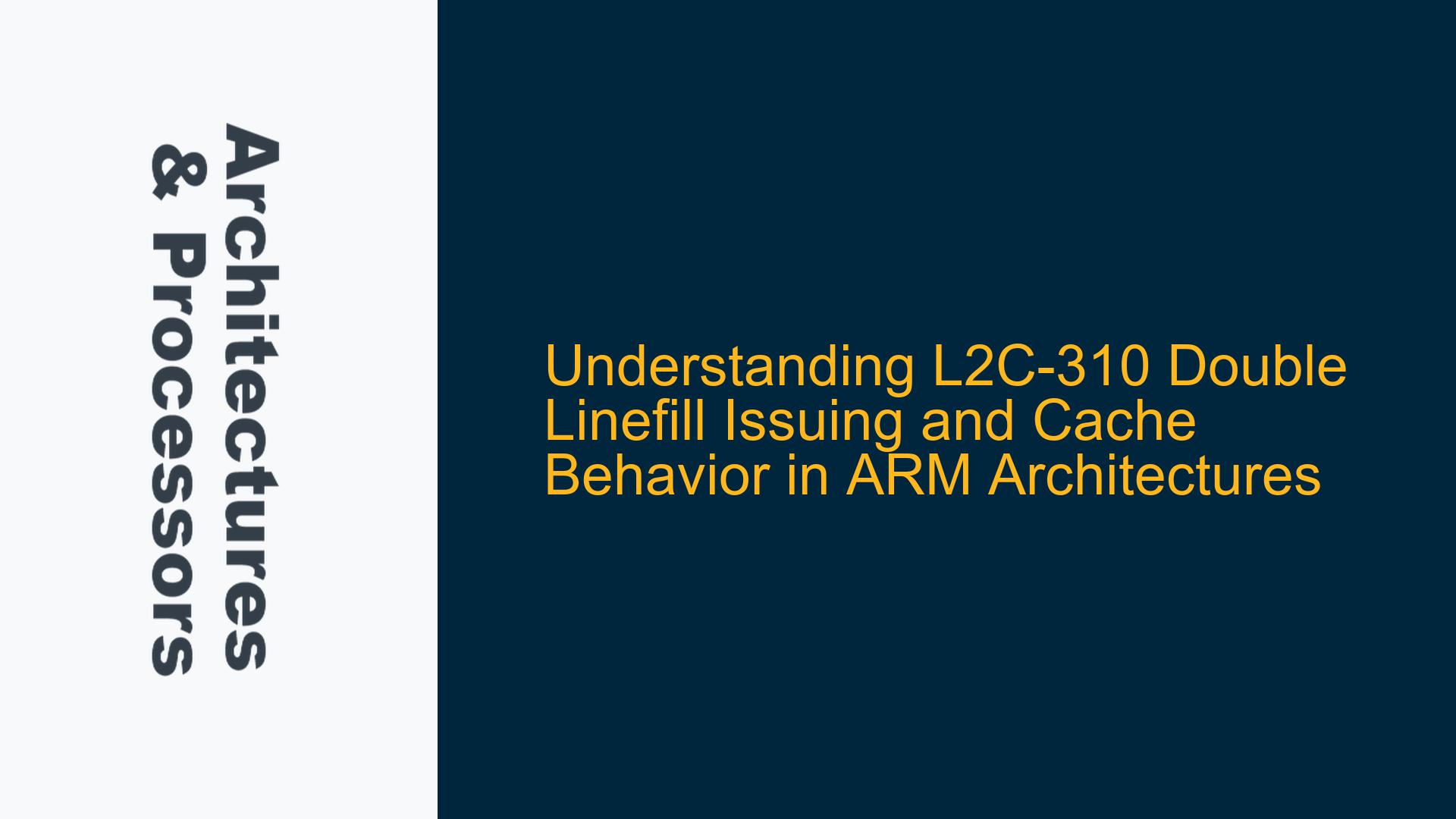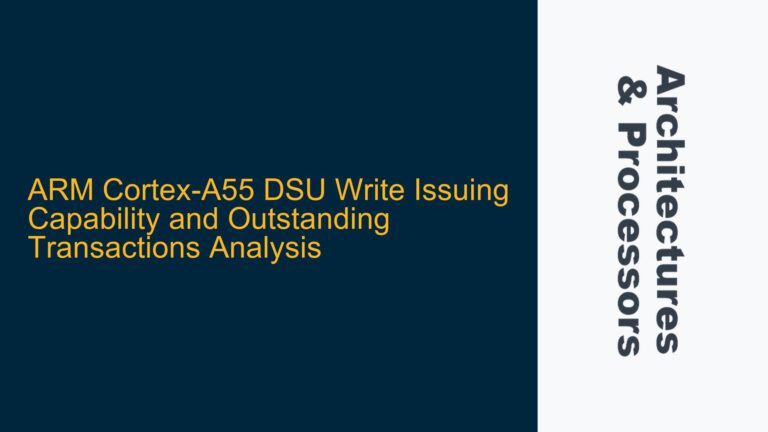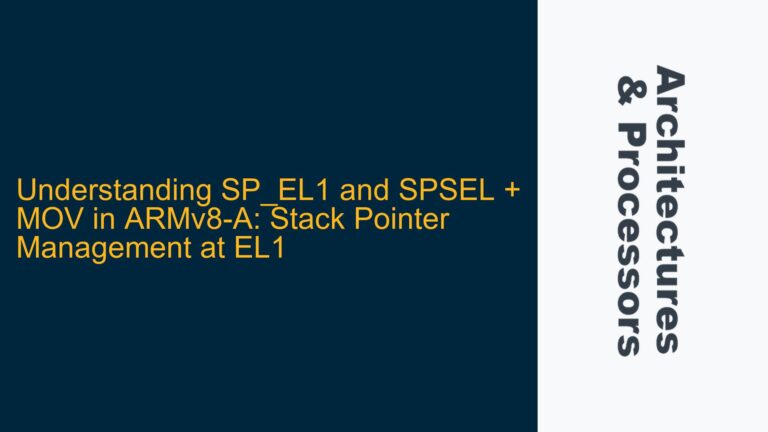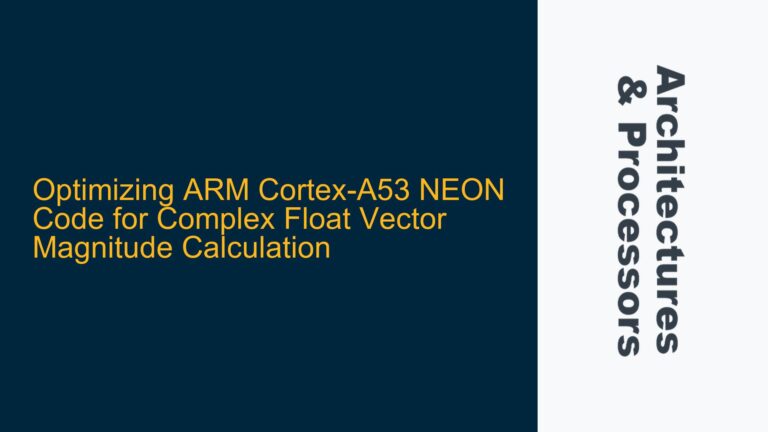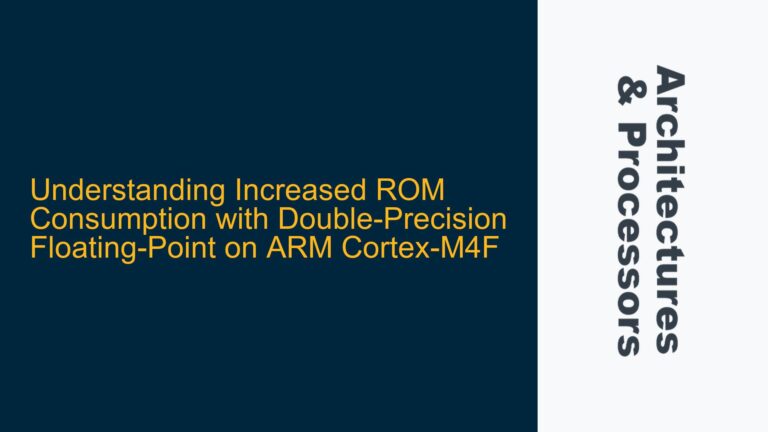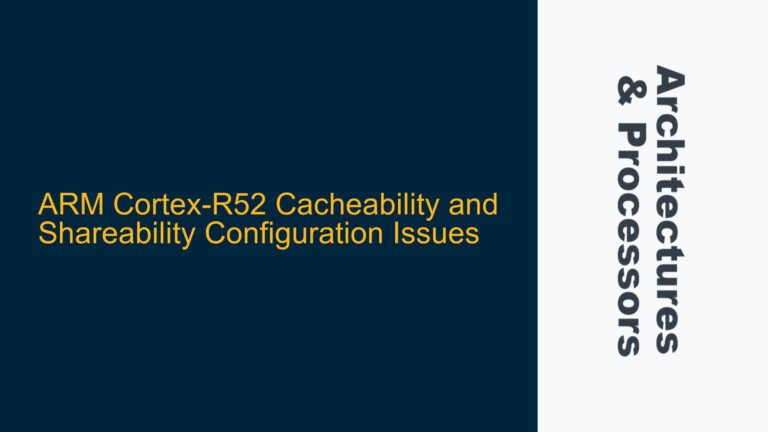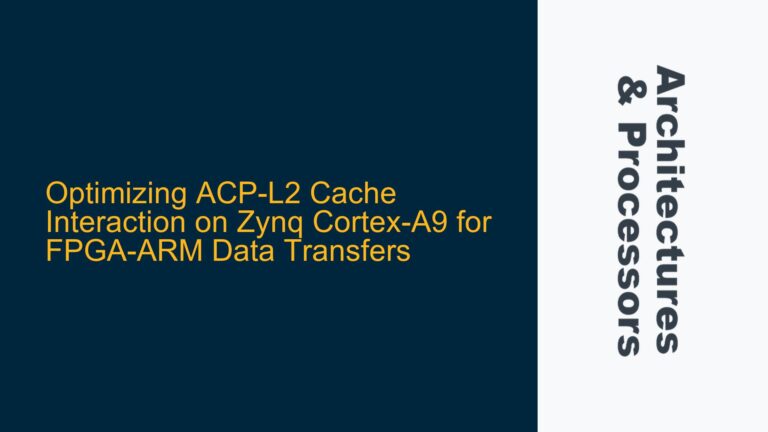ARM Cortex L2C-310 Cache Controller Double Linefill Mechanism
The ARM Cortex L2C-310 cache controller is a critical component in many ARM-based systems, responsible for managing data transfers between the L2 cache and external memory or L3 cache. One of its advanced features is the double linefill issuing mechanism, which can significantly impact system performance. This mechanism involves the cache controller fetching two cache lines (64 bytes in total) from L3 or external memory into the L2 cache under specific conditions. Understanding this behavior is essential for optimizing system performance and diagnosing potential bottlenecks.
The double linefill issuing mechanism is designed to improve memory access efficiency by anticipating future memory requests. When a cache miss occurs in the L2 cache, the L2C-310 controller not only fetches the requested cache line but also checks the second cache line within the same 64-byte boundary. If the second cache line is also missing in the L2 cache, it is fetched from L3 or external memory and allocated in the L2 cache. If the second cache line is already present in the L2 cache, the fetched data is discarded. This behavior is distinct from prefetching, as it is triggered by actual cache misses rather than speculative memory access patterns.
The key to understanding this mechanism lies in the interaction between the L2 cache, L3 cache, and external memory. The L2C-310 controller operates on 32-byte cache lines, but it can issue a 64-byte linefill request to the L3 cache or external memory. This means that when a cache miss occurs, the controller fetches two consecutive 32-byte cache lines, effectively doubling the amount of data transferred in a single memory access. This can reduce the number of memory accesses required to service subsequent cache misses, thereby improving overall system performance.
However, this mechanism also introduces complexity in cache management and coherency. The L2C-310 controller must ensure that the fetched data is consistent with the rest of the system and that any modifications to the cache lines are properly handled. This requires careful coordination between the cache controller, memory controller, and other system components.
Memory Access Patterns and Cache Line Allocation Policies
The double linefill issuing mechanism is influenced by several factors, including memory access patterns, cache line allocation policies, and system configuration. One of the primary factors is the memory access pattern of the application or workload running on the system. Sequential memory access patterns, where consecutive memory addresses are accessed in order, are more likely to benefit from double linefill issuing. In such cases, fetching two cache lines at once can reduce the number of cache misses and improve memory access latency.
Another factor is the cache line allocation policy of the L2C-310 controller. The controller uses a write-allocate policy, which means that when a write miss occurs, the corresponding cache line is fetched from memory and allocated in the cache before the write operation is performed. This policy ensures that subsequent read or write operations to the same cache line can be serviced from the cache, reducing memory access latency. However, it also means that the double linefill issuing mechanism is more likely to be triggered during write misses, as the controller fetches two cache lines to optimize future memory accesses.
The system configuration also plays a role in determining the effectiveness of the double linefill issuing mechanism. The size of the L2 cache, the latency of the L3 cache or external memory, and the bandwidth of the memory interface all influence the performance impact of double linefill issuing. In systems with a large L2 cache and low-latency memory, the benefits of double linefill issuing may be less pronounced, as the cache hit rate is already high, and memory access latency is low. Conversely, in systems with a small L2 cache and high-latency memory, double linefill issuing can significantly improve performance by reducing the number of cache misses and memory accesses.
Implementing Cache Coherency and Data Synchronization Strategies
To effectively leverage the double linefill issuing mechanism and ensure optimal system performance, it is essential to implement robust cache coherency and data synchronization strategies. Cache coherency ensures that all caches in the system have a consistent view of memory, preventing data corruption and ensuring correct operation. Data synchronization ensures that data modifications are properly propagated between caches and memory, preventing stale data and ensuring data integrity.
One of the key challenges in implementing cache coherency and data synchronization is managing the interaction between the L2 cache and L3 cache or external memory. The L2C-310 controller uses a snoop control unit (SCU) to monitor memory accesses and maintain cache coherency. The SCU ensures that any modifications to cache lines in the L2 cache are propagated to the L3 cache or external memory and that any modifications to cache lines in the L3 cache or external memory are reflected in the L2 cache.
To implement effective cache coherency and data synchronization, it is essential to use memory barriers and cache maintenance operations. Memory barriers ensure that memory accesses are performed in the correct order, preventing data races and ensuring correct operation. Cache maintenance operations, such as cache invalidation and cache cleaning, ensure that cache lines are properly synchronized with memory, preventing stale data and ensuring data integrity.
In systems with multiple cores or processors, cache coherency and data synchronization become even more critical. Each core or processor may have its own L2 cache, and the L2C-310 controller must ensure that all caches have a consistent view of memory. This requires careful coordination between the cache controllers, memory controllers, and other system components. Implementing a robust cache coherency protocol, such as the MESI (Modified, Exclusive, Shared, Invalid) protocol, can help ensure that all caches in the system have a consistent view of memory and that data modifications are properly propagated between caches and memory.
In conclusion, the double linefill issuing mechanism in the ARM Cortex L2C-310 cache controller is a powerful feature that can significantly improve system performance by reducing the number of cache misses and memory accesses. However, it also introduces complexity in cache management and coherency, requiring careful implementation of cache coherency and data synchronization strategies. By understanding the factors that influence the double linefill issuing mechanism and implementing robust cache coherency and data synchronization strategies, system designers can optimize system performance and ensure correct operation.
